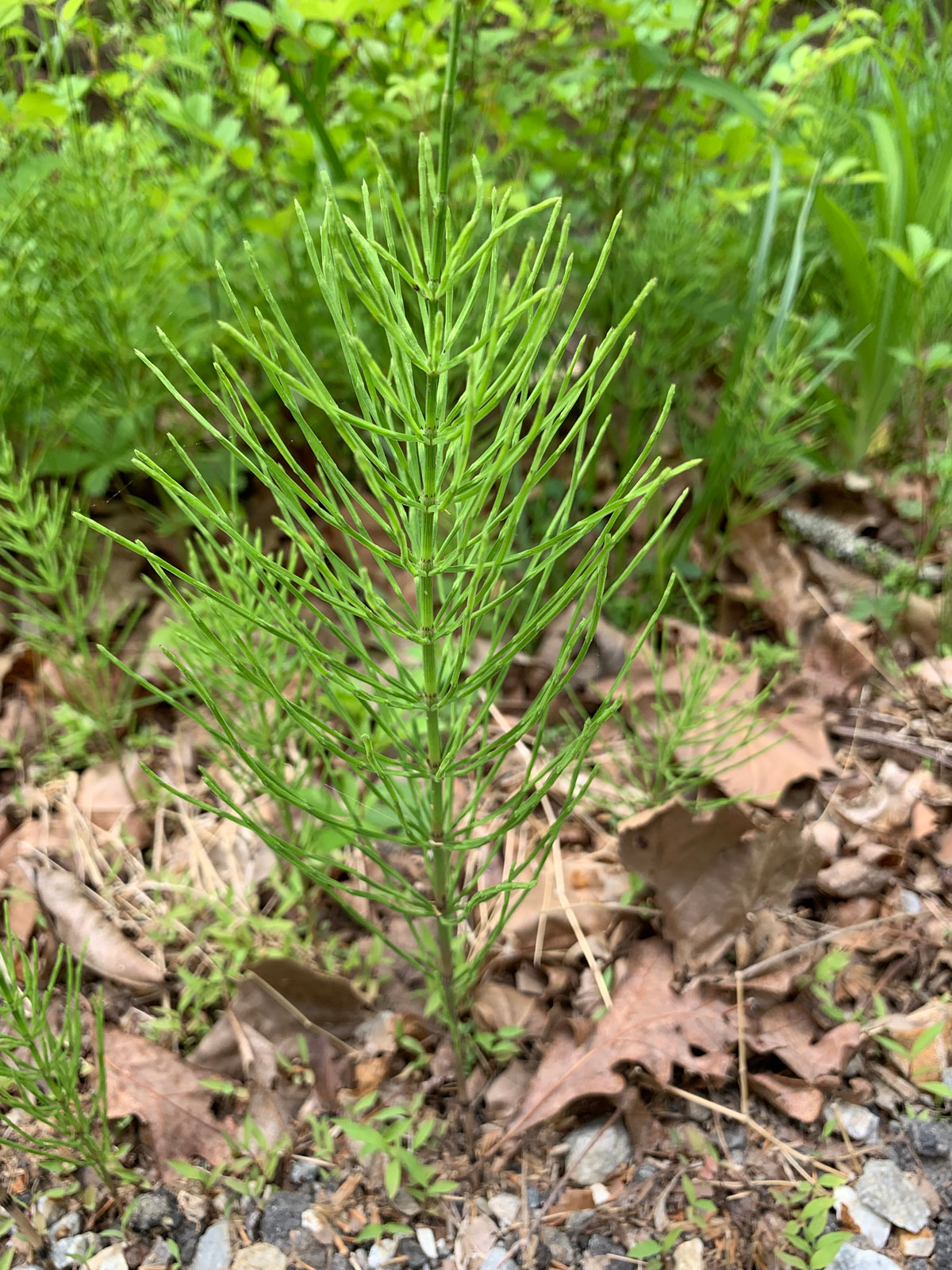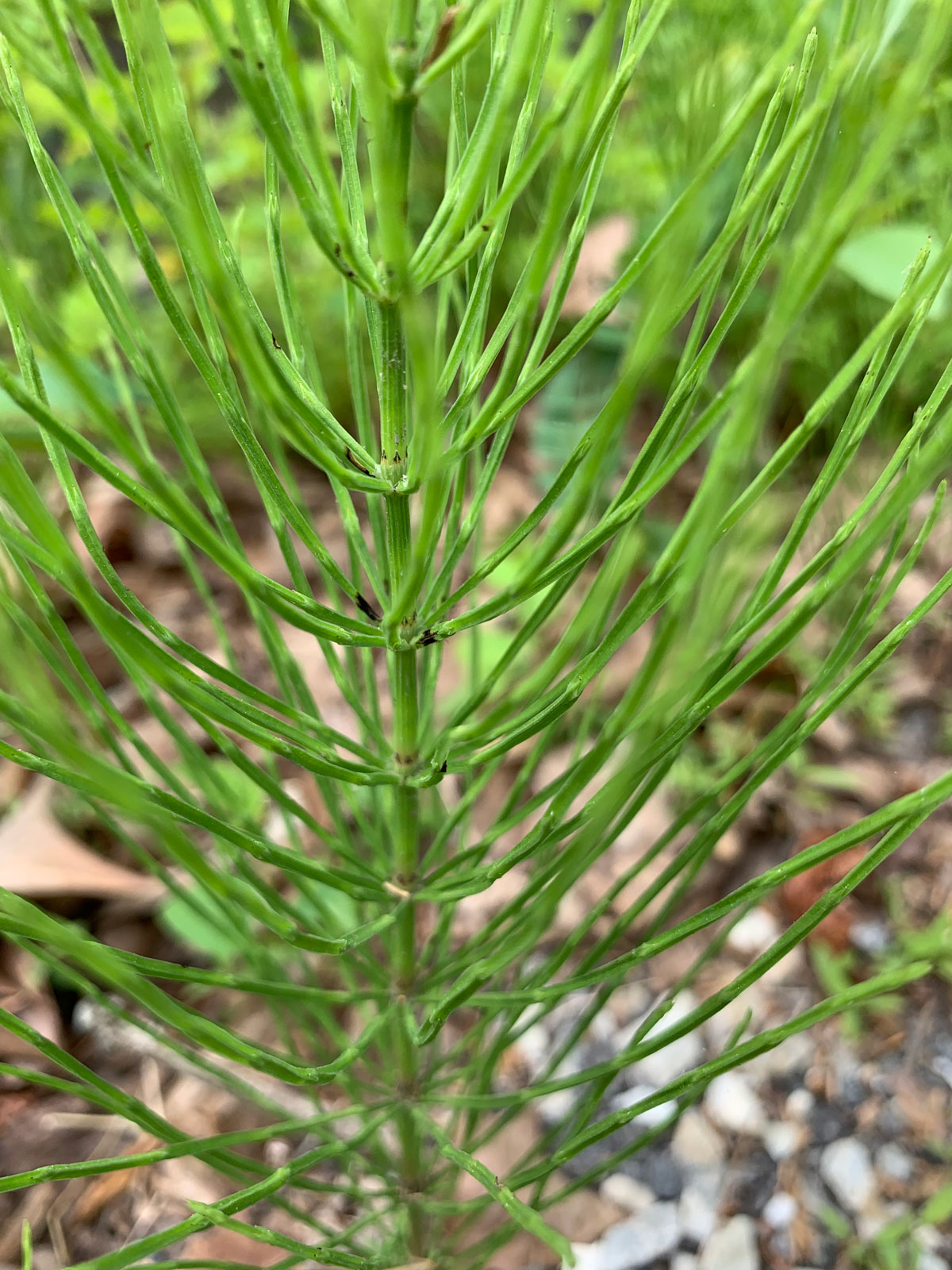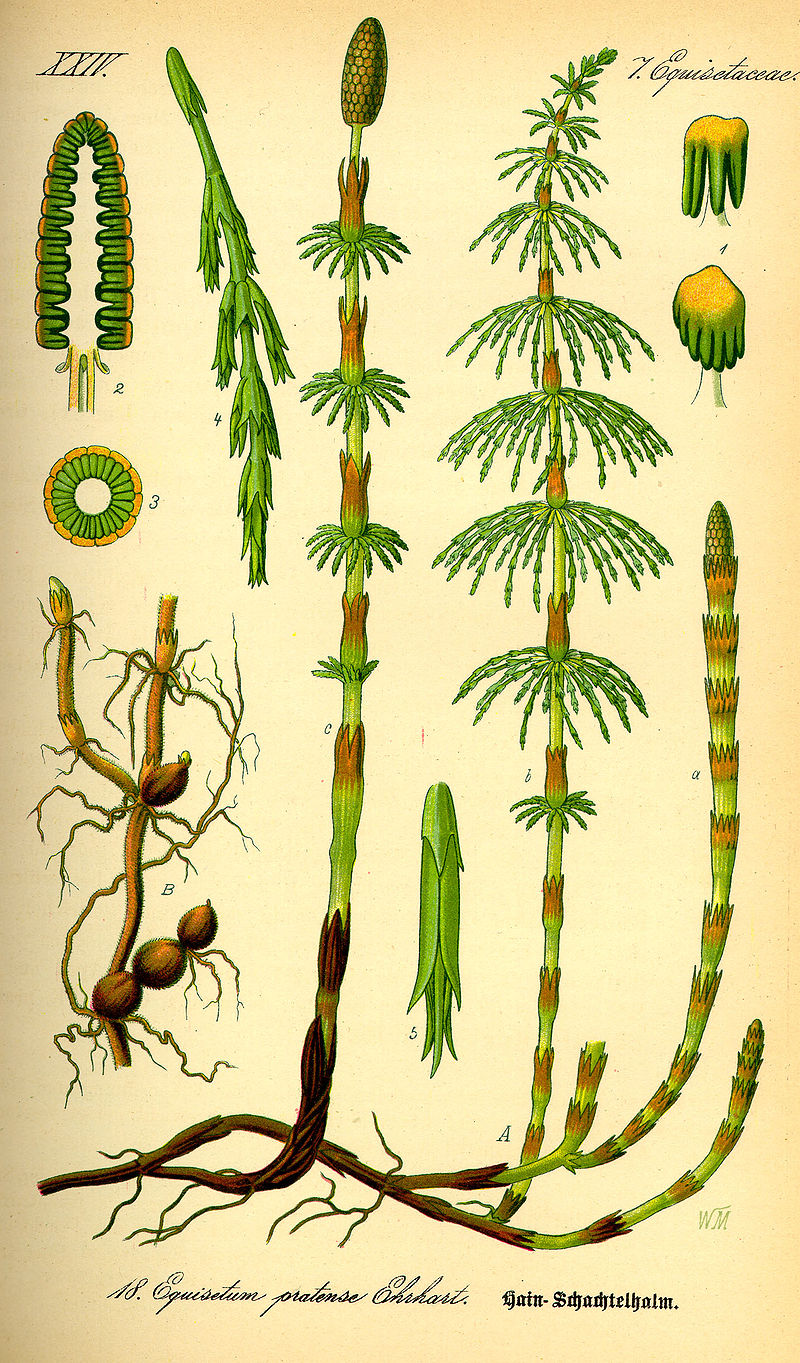When I came across this plant recently, I first wondered if it was some kind of fern, but then I was like, nah, maybe it’s a club moss? I had no idea. It looked pretty prehistoric to me, so that’s why I thought club moss.
My hunch about the pre-historic was on point (thanks Mom, Dad and Grandpa for taking me fossil hunting in West Virginia when I was a kid!) – I actually have seen fossils shaped similarly to this plant in the specimens we found and I still have from that time. “Equisetaceae is the only surviving family of the Equisetales, a group with many fossils of large tree-like plants that possessed ribbed stems similar to modern horsetails. Pseudobornia is the oldest known relative of Equisetum; it grew in the late Devonian, about 375 million years ago and is assigned to its own order.” (From wikipedia.org)
This plant has a rare ability (unusual among herb plants) in that it absorbs silicon from the soil, and can contain as much as 10% silicon. It also contains traces of nicotine. This plant does not reproduce via seed, it only spreads via rhizomes, and it can become pretty invasive and hard to get rid of once established.
Alternate Names: Common Horsetail, Bottlebrush, Pewterwort. Size: 4"-35" tall Family: Equisetaceae (Horsetail Family) Habitat: It can grow in a wide range of habitats, it does like some moisture in the soil, and typically is found on roadsides, damp and open woodlands, pastures, disturbed areas and near the edge of streams. Identification: Above ground you'll see the erect sterile stems that appear jointed where the whorled side shoots extend out. There are also brown fertile shoots that come up in the spring with a brown spore cone. Uses: It was once used to polish pewter and wood (hence the name "pewterwort" and to strengthen fingernails because of the silicon content. The extract of this plant is approved for use in agriculture to control a host of mold and mildew issues on crop plants. It can also be used in biodynamic farming to reduce the effects of excessive water around plants because the high silica content of the plant sucks up the moisture! There have been a host of other medicinal uses of this plant throughout history.












